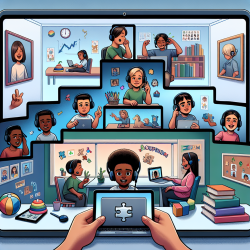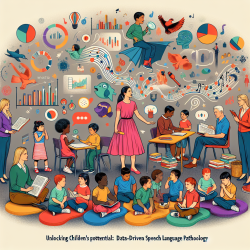Unlocking Potential: The Power of Online Therapy in Schools
In the rapidly evolving landscape of educational support services, online therapy is emerging as a transformative tool, particularly for occupational therapists working within schools. As we aim to maximize student outcomes, it's crucial to explore how digital platforms can enhance therapy services, including speech therapy for autism, and meet the individualized needs outlined in an IEP.
Why Online Therapy?
Online therapy, also known as teletherapy, offers a multitude of benefits that align perfectly with the goals of occupational therapists. The flexibility and accessibility of online platforms allow therapists to reach students in diverse geographical locations, ensuring that no child is left behind due to logistical constraints.
- Accessibility: Online therapy breaks down geographical barriers, providing services to students in remote or underserved areas.
- Flexibility: It allows for scheduling sessions at times that are convenient for both the therapist and the student, reducing missed sessions and improving consistency.
- Resource-Rich: Digital platforms often come with a variety of interactive tools and resources that can enhance engagement and learning.
Data-Driven Decisions for Enhanced Outcomes
Incorporating data-driven approaches is essential for making informed decisions in therapy. Online platforms can track student progress meticulously, providing valuable insights into what strategies are most effective. This data can be crucial for developing and adjusting IEPs, ensuring they are tailored to the student's evolving needs.
For instance, when dealing with speech therapy for autism, data collected from online sessions can highlight patterns and progress, allowing therapists to refine their approaches and optimize outcomes.
Building Connections and Trust
One of the concerns often raised about online therapy is the potential loss of personal connection. However, many therapists find that digital platforms can foster strong relationships. Video conferencing allows for face-to-face interaction, and the use of engaging digital tools can help build rapport with students.
Moreover, online therapy encourages parental involvement, as sessions can be easily observed, allowing for better communication and collaboration between therapists and families.
Conclusion: Embrace the Future of Therapy
As occupational therapists, embracing online therapy means embracing the future of our field. By leveraging technology, we can provide high-quality, individualized care that meets the diverse needs of students, ultimately leading to self-actualization and success. The evidence is clear: online therapy is not just a temporary solution but a powerful tool that can enhance the quality of educational support services.
Let us continue to explore and innovate, ensuring that every child has the opportunity to thrive.










